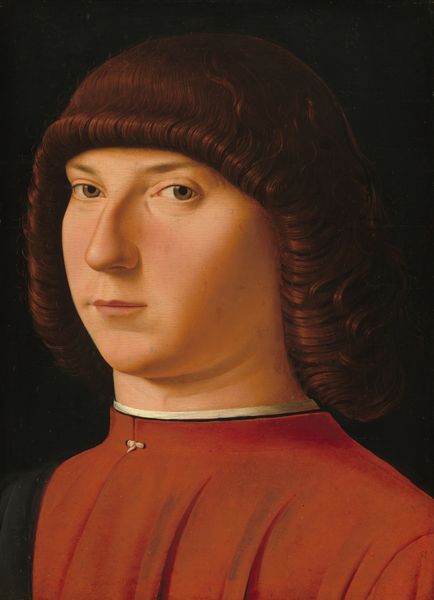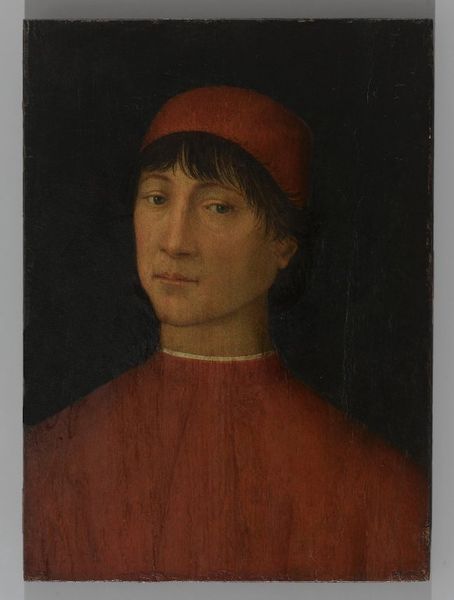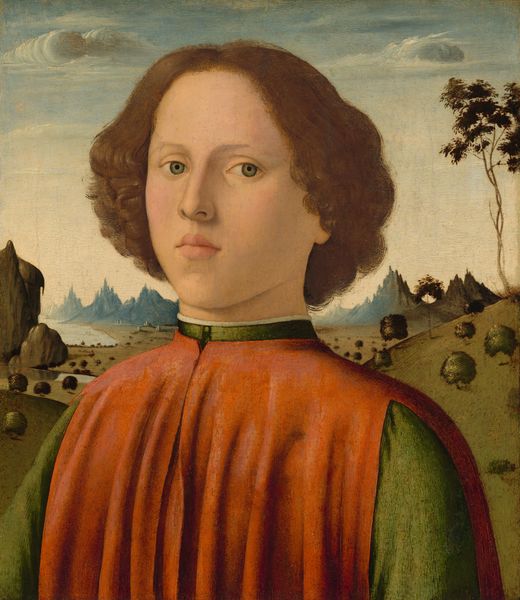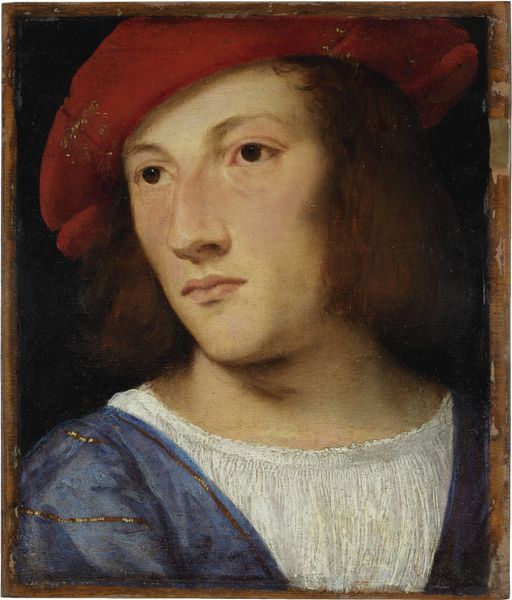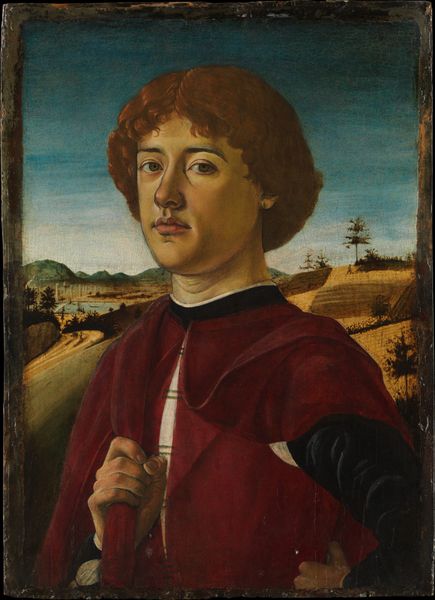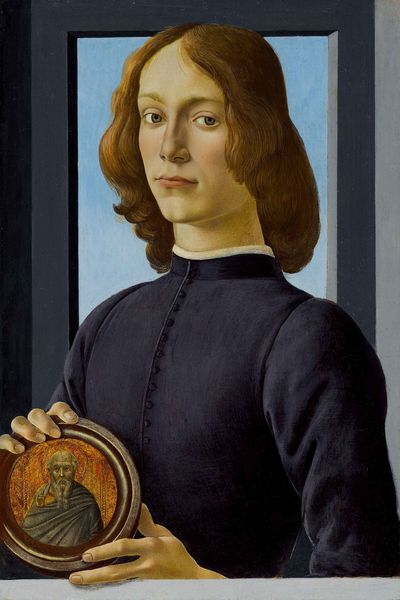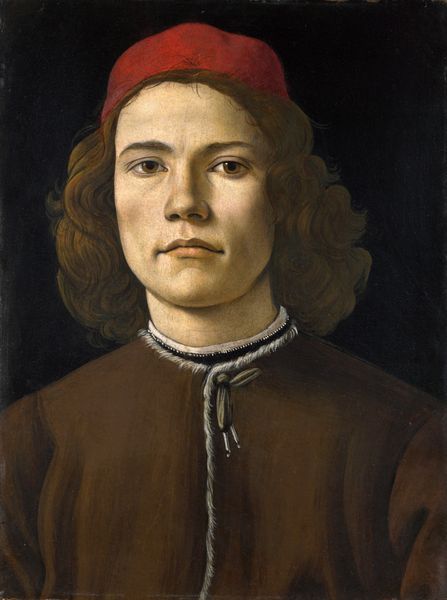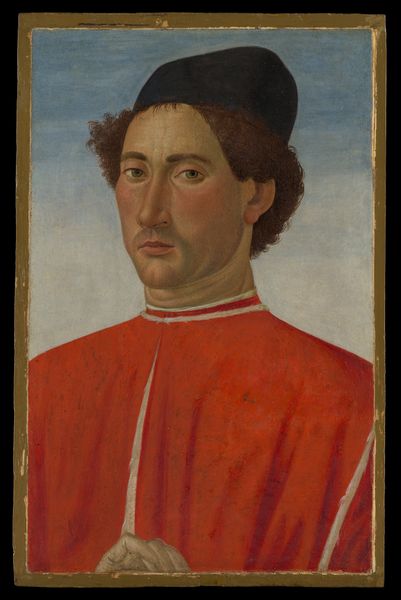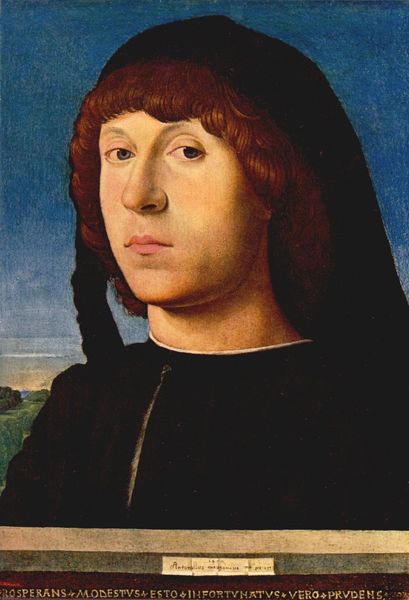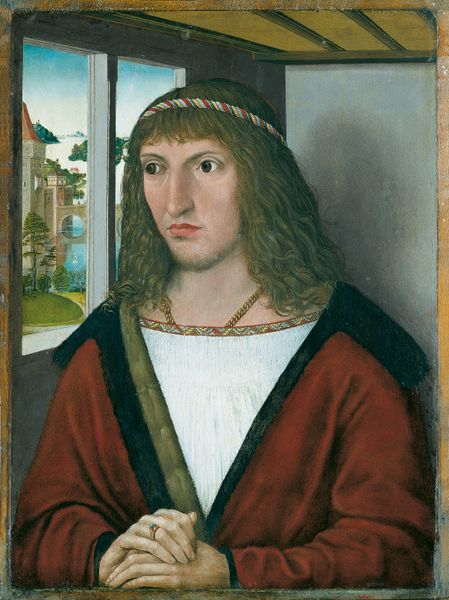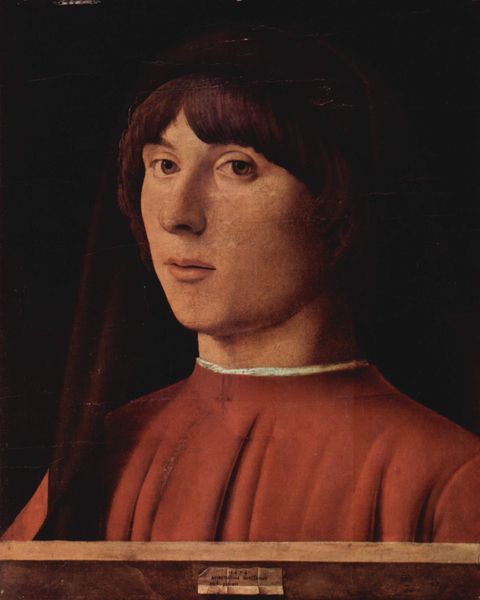
tempera, oil-paint
#
portrait
#
tempera
#
oil-paint
#
oil painting
#
italian-renaissance
#
realism
Copyright: Public domain
Curator: I’m immediately struck by the youthful energy that radiates from this portrait, but there’s also a quiet self-assuredness in his gaze. Editor: Absolutely. And what we're looking at is Filippino Lippi's "Portrait of a Youth," created around 1485. It is oil and tempera on panel and is a classic example of early Renaissance portraiture. Considering the prevailing social conditions of Renaissance Italy, we might ask: what stories might a painting like this tell about gender, class, and identity formation? Curator: That's an intriguing way to frame it. I see this young man as being on the cusp of adulthood. His simple attire doesn’t speak of extravagance or aristocratic excess but more of understated confidence and self-reliance. Do we know anything about his class and the symbolism behind his dress code, perhaps in relation to masculinity at the time? Editor: Not specifically about *him*, but Renaissance portraiture was frequently commissioned by wealthy merchant families as symbols of status and dynastic aspiration. It's possible this young man comes from that background, but the comparative simplicity of the clothing might indicate an emerging aesthetic - or a more conscious, understated articulation of status. It’s interesting that he meets our gaze so directly; not all portraits achieve such intense communication. What message might the sitter intend to project through such means, especially as gender roles continued to solidify? Curator: And it also makes me think of how portraiture becomes an active conversation around power. The red cap becomes less of a whimsical addition and more of an emblem; this, alongside the clear outline of the subject within an almost geometric frame, all become signifiers in a dance of power relations. Editor: Exactly. Consider also that we bring to such portraits our own evolved sensibilities – are we really seeing him as contemporaries would have done? Or are we subtly reinterpreting based on what we’ve come to know about, say, gender and privilege? It highlights how intertwined our art appreciation is with politics, history, and the ever-shifting dynamics of identity. Curator: Indeed, art challenges us to look backward, yes, but ultimately to understand ourselves and our present. Editor: Beautifully put. Every encounter, and every viewing becomes another layer.
Comments
No comments
Be the first to comment and join the conversation on the ultimate creative platform.
